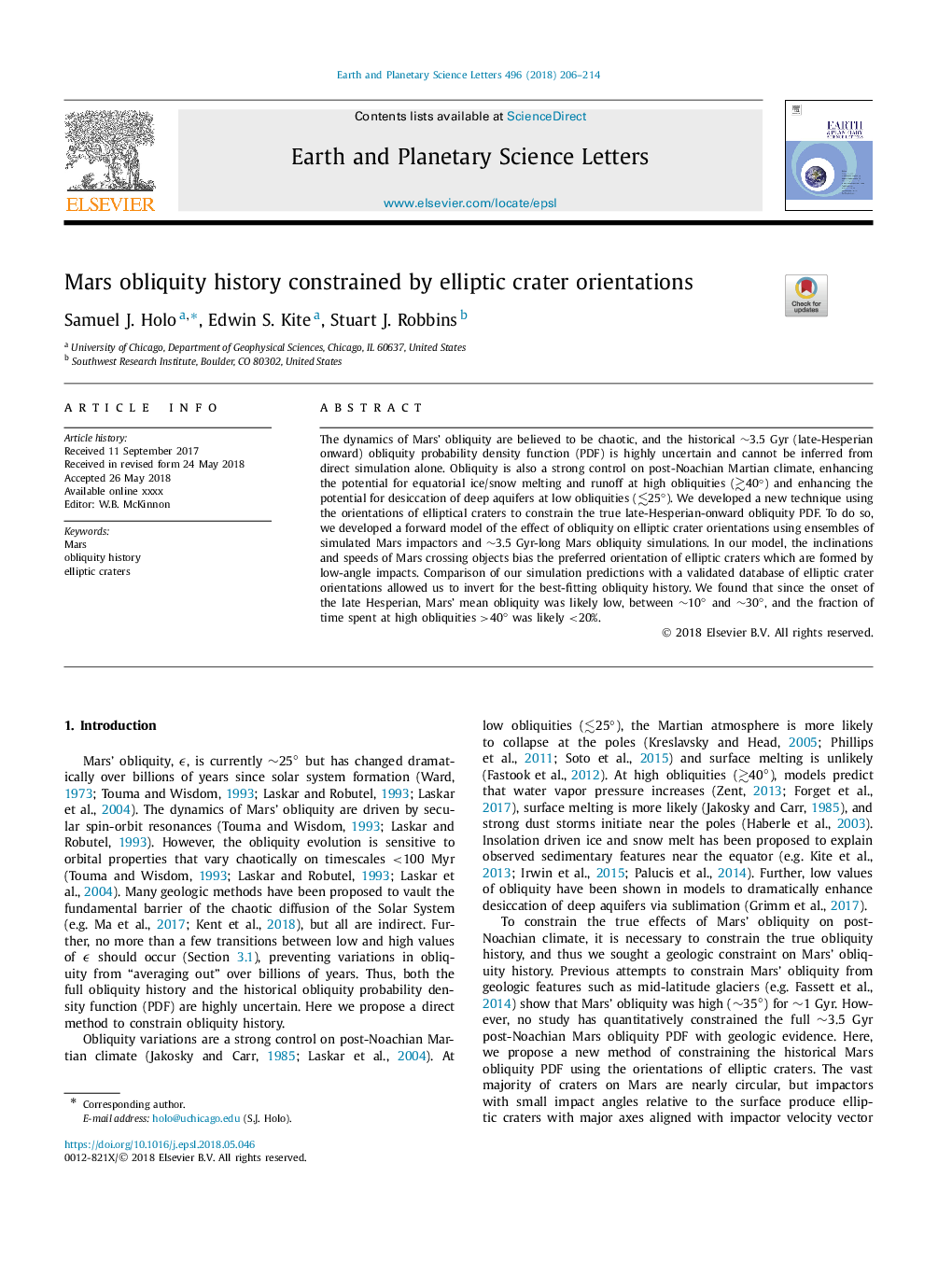| Article ID | Journal | Published Year | Pages | File Type |
|---|---|---|---|---|
| 8906784 | Earth and Planetary Science Letters | 2018 | 9 Pages |
Abstract
The dynamics of Mars' obliquity are believed to be chaotic, and the historical â¼3.5 Gyr (late-Hesperian onward) obliquity probability density function (PDF) is highly uncertain and cannot be inferred from direct simulation alone. Obliquity is also a strong control on post-Noachian Martian climate, enhancing the potential for equatorial ice/snow melting and runoff at high obliquities (â³40°) and enhancing the potential for desiccation of deep aquifers at low obliquities (â²25°). We developed a new technique using the orientations of elliptical craters to constrain the true late-Hesperian-onward obliquity PDF. To do so, we developed a forward model of the effect of obliquity on elliptic crater orientations using ensembles of simulated Mars impactors and â¼3.5 Gyr-long Mars obliquity simulations. In our model, the inclinations and speeds of Mars crossing objects bias the preferred orientation of elliptic craters which are formed by low-angle impacts. Comparison of our simulation predictions with a validated database of elliptic crater orientations allowed us to invert for the best-fitting obliquity history. We found that since the onset of the late Hesperian, Mars' mean obliquity was likely low, between â¼10° and â¼30°, and the fraction of time spent at high obliquities >40° was likely <20%.
Keywords
Related Topics
Physical Sciences and Engineering
Earth and Planetary Sciences
Earth and Planetary Sciences (General)
Authors
Samuel J. Holo, Edwin S. Kite, Stuart J. Robbins,
